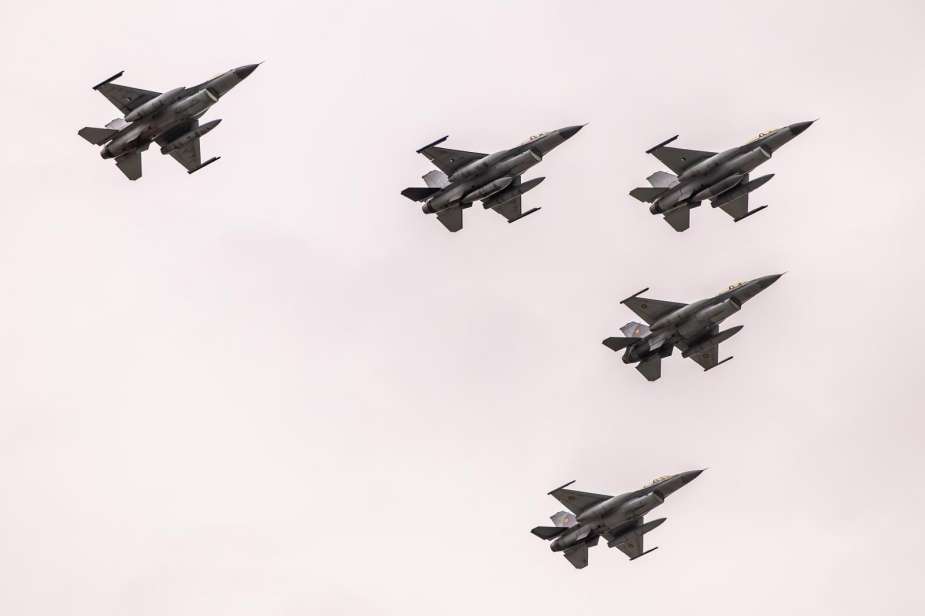Netherlands Delivers Three F-16s for Training Ukrainian Pilots in Romania
According to the X account of Dutch Defence Minister Kajsa Ollongren on April 17, 2024, the Netherlands transferred three additional F-16 fighter jets to a training center in Romania, dedicated to preparing Ukrainian pilots and ground staff to operate and maintain these aircraft in combat situations. This initiative is part of a broader international effort led by the Netherlands, Denmark, and the United States to bolster Ukraine's air defenses in response to ongoing Russian military aggression.
Follow Army Recognition on Google News at this link

The F-16 MLU Fighting Falcon is a multi-role combat jet developed by the United States and adopted by the Dutch military, among others. (Picture source: Dutch MoD)
Following the transfer, Dutch Defense Minister Kajsa Ollongren stated that the pilot training program is expected to commence this summer, with the first Dutch F-16s projected to arrive in Ukraine by fall. This follows a significant agreement hailed by Ukrainian President Volodymyr Zelenskiy as essential for enhancing Ukrainian air capabilities against Russian forces. However, some American officials have tempered expectations, noting that the impact of these jets might be limited against Russia's powerful air force and its defenses.
In contrast, Russian President Vladimir Putin downplayed the strategic value of the F-16s, predicting their ineffectiveness on the battlefield. In response, Ollongren criticized the ongoing conflict as illegal and destructive, highlighting the need to increase support for Ukraine.
The F-16 MLU Fighting Falcon is a multi-role combat jet developed by the United States and adopted by the Dutch military, among others. Designed primarily for a variety of missions from ground attack to air defense, the aircraft is noted for its versatility and ability to operate in different combat contexts.
The aircraft comes in several variants: the F-16A, F-16C, and F-16E are single-seaters, while the F-16B, F-16D, and F-16F can accommodate two crew members, thus facilitating missions that require a co-pilot for complex weapon systems management or flight training. Since its first flight on February 2, 1974, over 4,500 units have been built, and it is currently in service in 26 countries worldwide.
The F-16 Fighting Falcon is 15.05 meters long with a wingspan of 9.45 meters. Standing 5 meters tall, it weighs 11,000 kilograms when empty and can reach a maximum weight of 16,057 kilograms when loaded. Powered by an F100-PW-220e engine, the aircraft can thrust up to 129 kN, granting it a top speed of 2,414 kilometers per hour. It has a range of 2,700 kilometers and can reach a theoretical service ceiling of 17,000 meters, though it typically operates at around 15,240 meters.
In terms of armament, the F-16 is equipped with a 20 mm M61A-1 Gatling gun and has nine hardpoints for various munitions, enhancing its capability to address diverse threats on missions. This combination of speed, agility, and firepower makes the F-16 particularly effective in both offensive and defensive roles, which explains its popularity and widespread use across global air forces.
To date, the Netherlands has delivered eight of the 18 F-16s promised to the Romanian training center since November. They have committed to supplying a total of 24 F-16s to Ukraine, with the first batch expected later this year, supplementing earlier contributions from the Danish forces. In a recent announcement, the Dutch government pledged to increase its military support for Ukraine to 3 billion euros for the current year, with an identical amount allocated for 2025.
- Hits: 1834
















